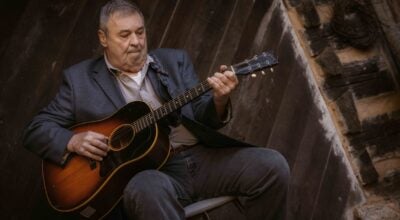Competitive Showjumping for the Non-Horsey Folks
Published 10:00 pm Thursday, August 28, 2014
By Julia Lourie
Growing up as a competitive showjumper, I was always asked the same question on Mondays in school: “Did you win your race this weekend?” While well-intentioned, the biggest problem with this question is that I was not a jockey, and I hadn’t been racing at all. I was a competitive showjumper. Though horses may be ridden in many ways, in America racing remains the most well-known, particularly since it is televised throughout the year. Showjumping has remained a bit opaque, formerly a sport reserved for the very wealthy and today one that remains more than a little confusing for most people. Now, people from all over the country of all ages and from all different backgrounds compete in showjumping, and the sport has been steadily opening up to the public and inviting in new spectators and competitors alike.
The word “showjumping” refers firstly to an “English” style of riding, meaning the riders are not in the big horned saddles that you see in cowboy movies. Those horned saddles are part of the “Western” style of riding, which includes disciplines like rodeo. For however deep and horned the Western saddle is, the English saddle is flat and smooth. When watching English riding competitions, the most distinguishable features of the style are this flat leather saddle and the outfit the riders wear, which is typically beige pants, white collared shirt, blue sports coat, tall black boots, and a black riding helmet.
Within the category of “showjumping,” there are 5 disciplines. These disciplines are: Jumpers, Hunters, Equitation, Eventing, and Dressage. This article will shed light on three of those disciplines: Jumpers, Hunters, and Equitation. Information on the other disciplines will follow in coming weeks. In the Jumpers, competitors are judged objectively based on both their speed and their ability to not knock any fences down. Of the three showjumping disciplines, this is the only one that is judged based on objective facts rather than a person’s subjective judgment. Because of this, the attire of the riders becomes less important. On some days, you may see Jumper riders competing in beige pants and a colorful polo shirt, with no sportscoat. When competing in the Jumpers, one always wishes to do a “clear” round, meaning one has left all of the fences up and completed the course of jumps within the “Time Allowed,” which is how many seconds you’re given to finish the course within. Depending on the format of the class, most Jumper classes will have a first round featuring about 12 jumps, and then an abbreviated second round called a “jumpoff”, featuring fewer jumps than the previous round and the winner of which is based on going clear and having the fastest speed. In Jumpers, you keep score by tracking “faults,” or penalties incurred while on course. If a horse stops in front of a jump, that is a “refusal” and counts as 4 faults. A second refusal results in elimination. Knocking a rail down also counts as 4 faults, and you get 1 “time fault” for every second you are over the Time Allowed. A clear round means you had no faults whatsoever.
The second discipline is the Hunters. The Hunters are all about the beauty, grace, movement, and conformation of the horse being shown. The rider must look presentable, and will be seen in the traditional sportscoat, but the rider is not the focus of these classes. The judges of these classes look to the horse, taking into account such things as if the horse holds its knees nice and square over a jump, how low or high the horse holds its head while cantering, and how graceful and fluid its gaits are. In the Hunters, speed is not a determining factor of who will win, and it is actually preferable to have a slow and languid pace. The Hunters are about attention to detail when it comes to the horse; the horse should look presentable and clean, well groomed, and with braids in its mane and tale.
The last discipline is the Equitation, which is similar to the Hunters. But instead of the focus being on the horse, it is now on the rider. In the Equitation, young men and women try their hardest to maintain excellent posture, such as having a tall back and keeping their heels pointed down to the ground. Judges in this discipline are basing their scores on the tidiness of the rider, the way the rider handles his or her horse, the way the rider holds his or her body both while jumping and while cantering, and is generally based on the judgment of the rider’s form and technical capability. Both Hunter and Equitation classes have “flat” classes, where horses do not jump any jumps at all. These classes are also sometimes referred to as “undersaddle” classes. Competitors in both Hunter and Jumper classes will receive scores on a scale ranging up to a perfect 100, though these scores are not always announced out loud. At some competitions, riders’ scores are announced as they leave the ring (e.g. “Britney receives a score of 86”), yet at other competitions the results are not announced publicly and are only known by the judge.
A handy way to remember the differences between these three disciplines is Hunters are for Horses, Equitation is for Equestrians, and Jumpers are for Jumping and going fast. In the future, this column will delve further into interesting and educational horse show information, in the hopes of helping new visitors to the sport have exciting and meaningful experiences at the showgrounds.
Provided by Julia Lourie, Programming and Media Associate at Tryon International Equestrian Center





